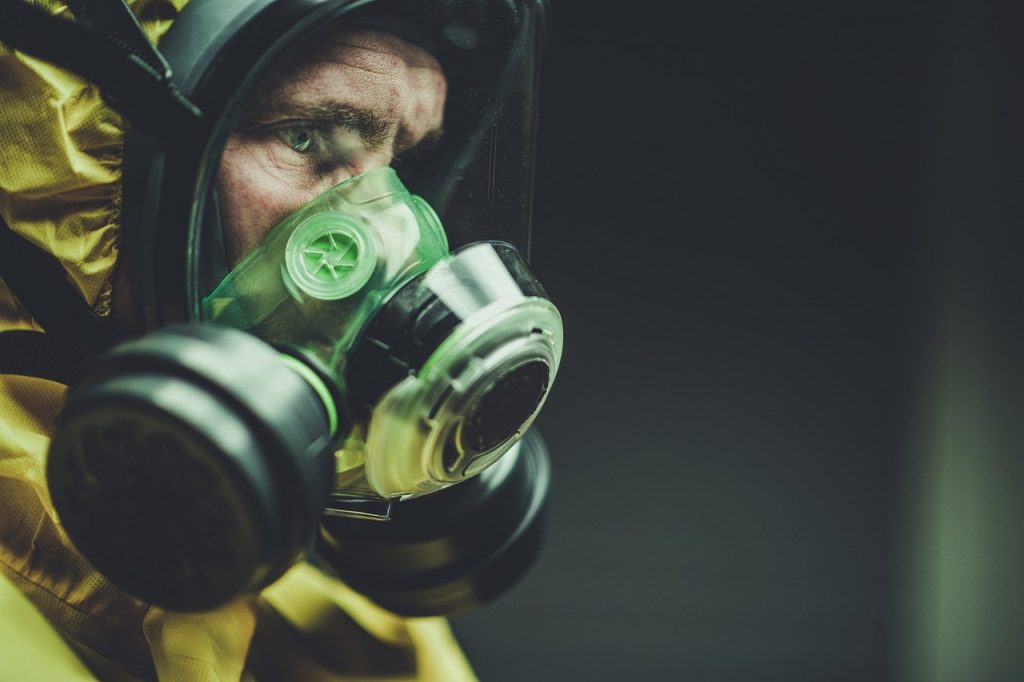
Feds Can't Tell Me What To Do!
Over the last couple of weeks, anyone who’s been on social media has been bombarded with claims that “Stay Home” orders by counties and governors are unconstitutional. I think it’s great that people take an interest in how government works, so let’s take a closer look at this.
Most claims start off with the premise that we have a 1st Amendment (1A) right to assemble, and that’s a good place to start. Correct! Under the 1A assembly clause, people have the right to “peaceably…assemble.” But like all rights under the Constitution, the right to assembly is not absolute. Like the 1A right to free speech, government can tell you that you cannot yell “fire” in a crowded theater.
Two Constitutional provisions, the Commerce Clause and the Taxing and Spending Clause, permit the federal government to regulate certain public health activities. The Commerce Clause grants Congress the authority to regulate international and interstate commerce. As applied to public health, the federal government has the authority to make laws and regulate in areas affecting international and interstate transmission of disease. The Taxing and Spending Clause grants Congress the authority to tax and spend for the general welfare and national defense. It is through the taxing and spending power that the federal government is authorized to allocate funding and other resources to a state to assist with a state response to a public health emergency.
States Can't Tell Me What To Do!
Some realize that it is the state and local authority telling them to stay home, so after making a federal 1A argument, they question the authority of their locals to restrict movement. Well, under the 10th Amendment, “[t]he powers not delegated to the United States by the Constitution, nor prohibited by it to the states, are reserved to the states respectively…” Most of the general ‘police powers’ fall into this category. Under Jacobson v. Massachusetts, 197 U.S. 11 (1905), the Supreme Court addressed almost this exact set of facts. Under Jacobson, the Court found “[t]he police power of a State embraces such reasonable regulations relating to matters completely within its territory, and not affecting the people of other States, established directly by legislative enactment, as will protect the public health and safety.” So long as the local regulations do not conflict with the Constitution, local authorities have police powers to enforce laws that came to be through a legislative process. The Supreme Court acknowledge that “liberty secured by the Constitution of the United States does not import an absolute right in each person to be at all times, and in all circumstances, wholly freed from restraint.”

Texas Emergency Powers
Through the police powers reserved to them by the 10th Amendment of the Constitution, states have the authority to protect the health, safety, morals, and general welfare of the people. The power to implement public health control measures, including quarantine and isolation, is a well established exercise of state police power. 
In Texas, the Communicable Disease Prevention and Control Act defines the roles and responsibilities for public health control measures in both standard and emergency situations. On the local level, the local health authority (LHA) has supervisory authority and control over the administration of communicable disease control measures within their jurisdiction unless specifically preempted by the state. Rights and duties during public health emergencies are delegated between the Executive Commissioner of the Texas Health and Human Services Commission (HHSC), the Commissioner of the Texas Department of State Health Services (DSHS), and the LHA. Ensuring cooperation between these entities is essential to responding adequately to a public health emergency.
The Governor’s authority during a public health emergency is based on (1) the Texas Disaster Act, which allows for state and local declarations of a state of disaster; and (2) the Texas State of Emergency Act, which allows the Governor to proclaim a state of emergency upon application of a locality. The Governor may, by Executive Order or proclamation, declare a State of Disaster if a disaster has occurred or the occurrence or threat of a disaster is imminent. Once a State of Disaster is declared, the preparedness and response aspects of the State Emergency Management Plan are activated. During a State of Disaster, the Governor has the power to suspend laws relating to the normal order of state business and state agency provisions, orders, or rules. The governor’s office shall compile and maintain a comprehensive list of regulatory statutes and rules that may require suspension.
More information can be found at the University of Houston Law Center’s COVID-19 Pandemic Legal Resources for Texas page.